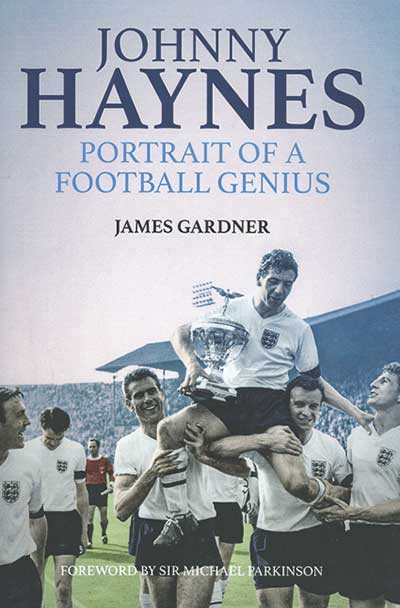
Pitch Publishing, £18.99
Reviewed by Neil Hurden
From WSC 369, November 2017
Buy the book
Supporting Fulham can be frustrating – I refer you to our roll of honour in evidence – and in some ways my generation can lay claim to the most frustrating experience of all. I saw my first game at the Cottage less than a year after the club’s greatest player threaded his last inch-perfect pass on the sacred turf, at the age of 34, just weeks after the 1970s staggered into being. The wait for subsequent glory was then what might politely be called testing.
Given the persistent sense of nostalgia that enveloped the Cottage for most of my youth, I’ve long been fascinated by the Haynes legend and the contradictory strands of evidence that helped create it. Unfortunately, there’s very little film footage of the maestro in action apart from jerky, slow motion highlights of England’s famous 9-3 victory over Scotland in 1961. James Gardner’s thoughtful biography of Fulham’s true “football genius” goes some way, therefore, to filling in the gaps, building layers of anecdote and skilfully co-ordinating the impressions of numerous contemporaries.
Gardner does his best to convey why Haynes was seen as the crowning glory of English football in the period from the late 1950s up to his car accident in August 1962, which prematurely restricted his England career to 56 caps and two World Cups. As a result it’s possible to some extent to picture him as a composite of modern players – the sublime passing of a David Silva, say, morphed with the shooting ability and combativeness of a Steven Gerrard?
The real interest, though, comes from his vivid portrayal of the times in which Haynes wove his spell: the national thirst for football shown by a crowd of 22,000 for a boys’ match in which the 11-year-old Haynes’ Edmonton team took on Leicester at Filbert Street; the close social bonds between players and fans right up to the late 1960s; the amateurishness and poor facilities, notably at Fulham in the 1950s when the club managed to avoid being promoted for years even with a front line including Haynes and two other England internationals, Bedford Jezzard and Bobby Robson.
The wages too – before Haynes’ weekly pay famously rocketed to £100 overnight in 1961’s “year of liberation”, he had received just £20 in winter and £17 in summer. On being offered £18 and £15 a year earlier, Fulham’s centre-forward, Maurice Cook, was told that he had no hope of matching Haynes’ pay because he was a far better player, prompting Cook’s pointed retort: “Not in the fucking summer, he’s not!”
In the end the most powerful theme of the book is dismay at the comparative lack of recognition given to Haynes historically. Gardner explores the possible reasons well: Haynes’ on-field irascibility; his one-team career at a “small” club; his later, misguided period playing in South Africa (a fault which he was very much not alone in committing); and his personal exile later in life in Edinburgh. For a man who formed the link between the Billy Wright and Bobby Moore eras and who might very well have been in the World Cup-winning team with his clubmate George Cohen, had injury not intervened, this leaves a sad aftertaste. But the essence of the player – England’s greatest ever No 10 – is captured permanently in the words of so many of his contemporaries and his fans.